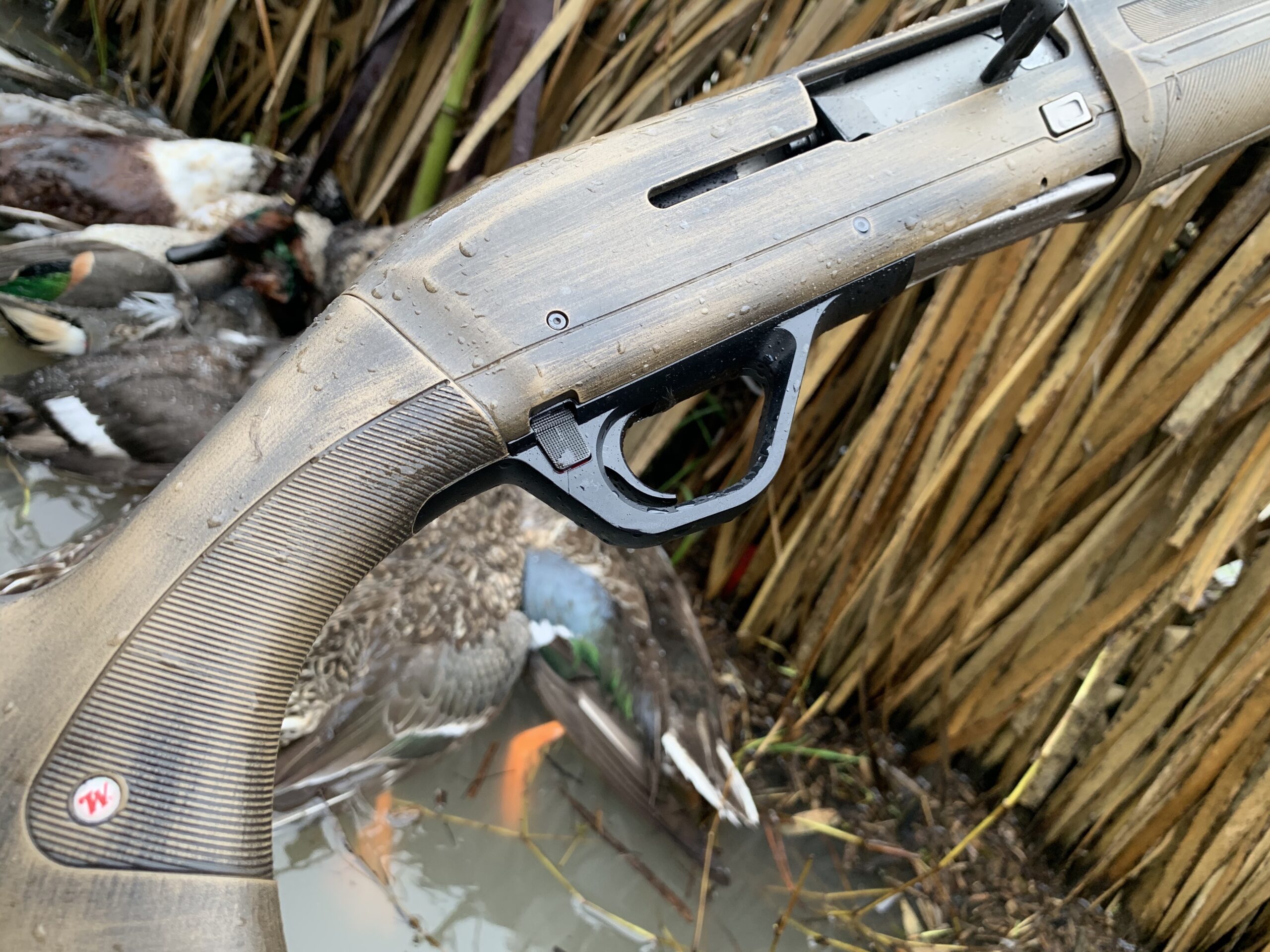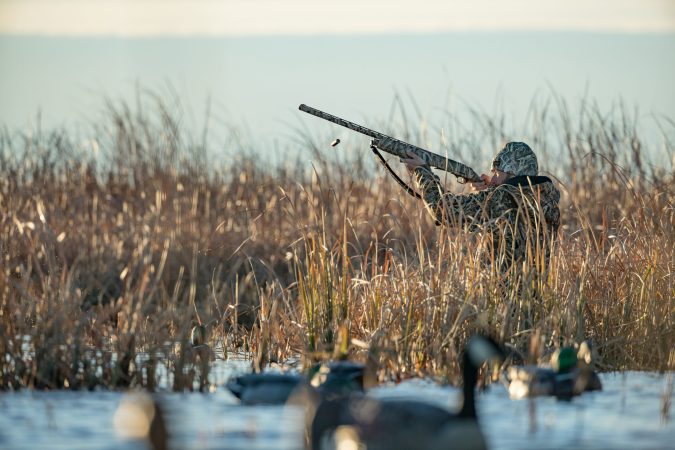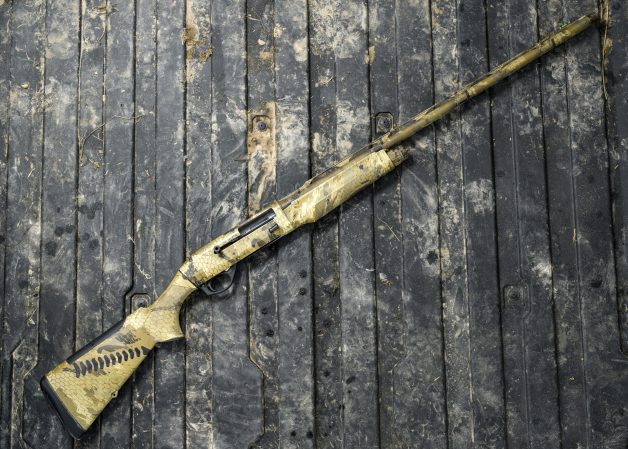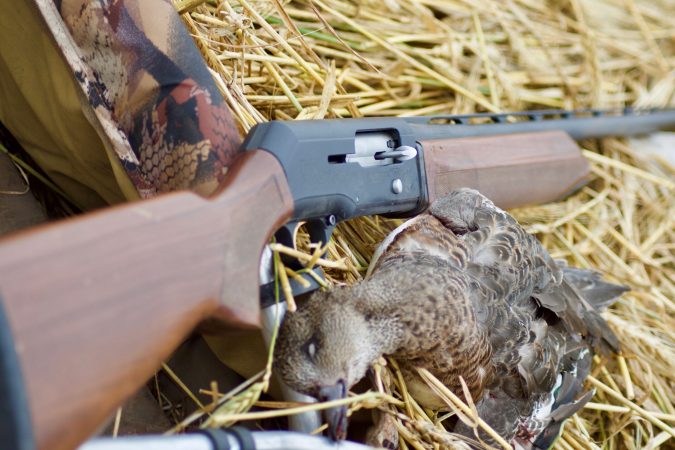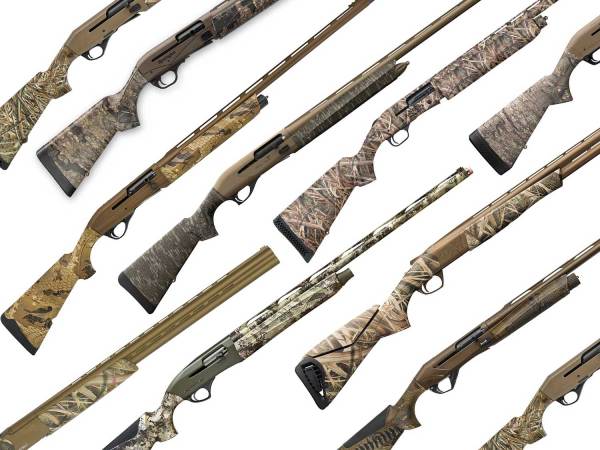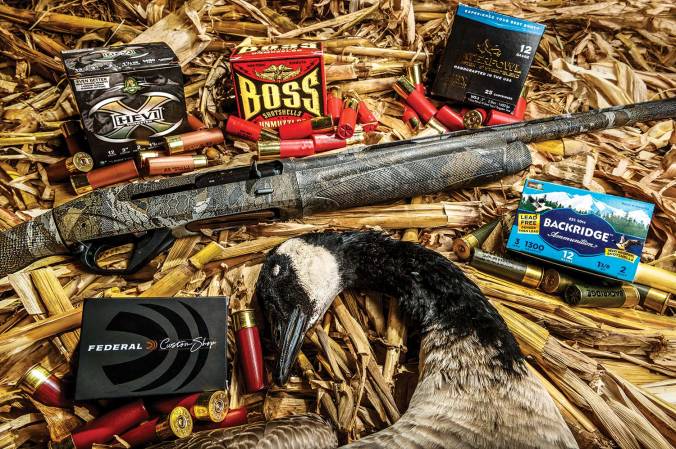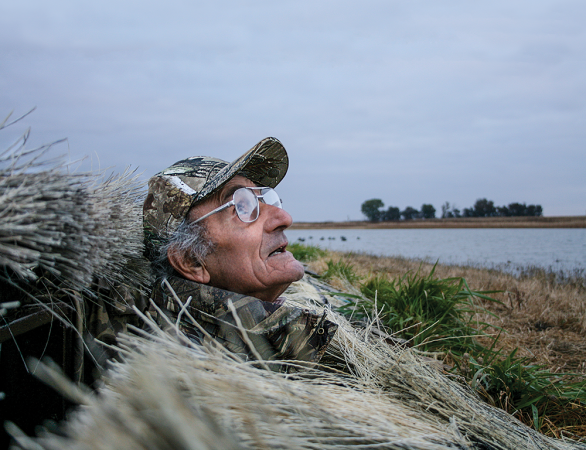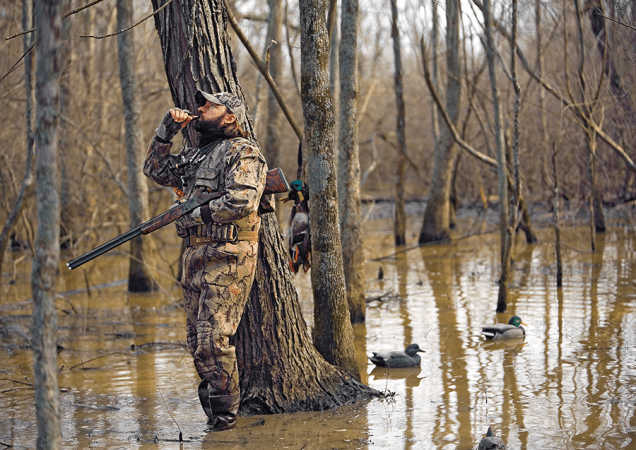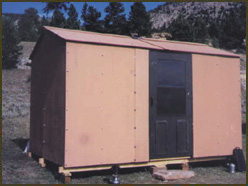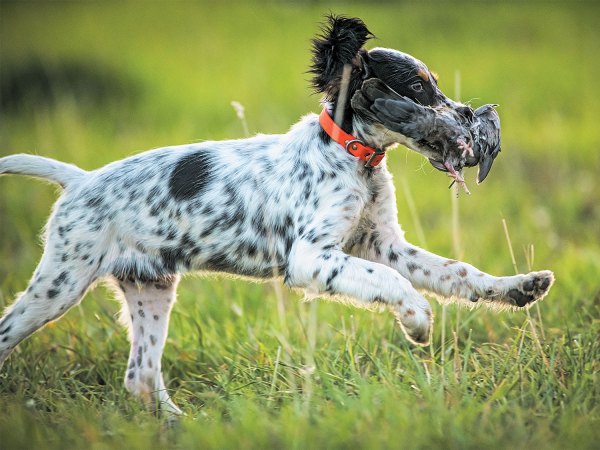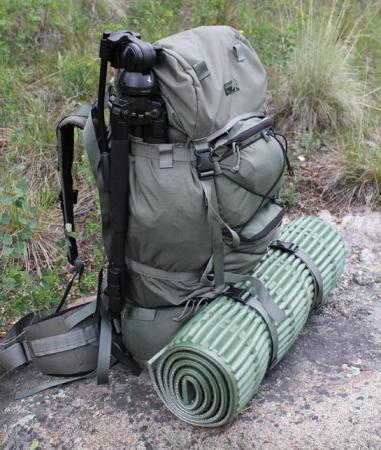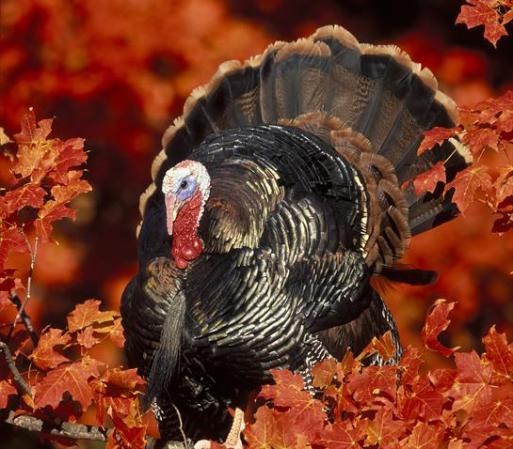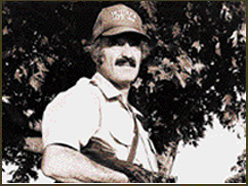We may earn revenue from the products available on this page and participate in affiliate programs. Learn More ›
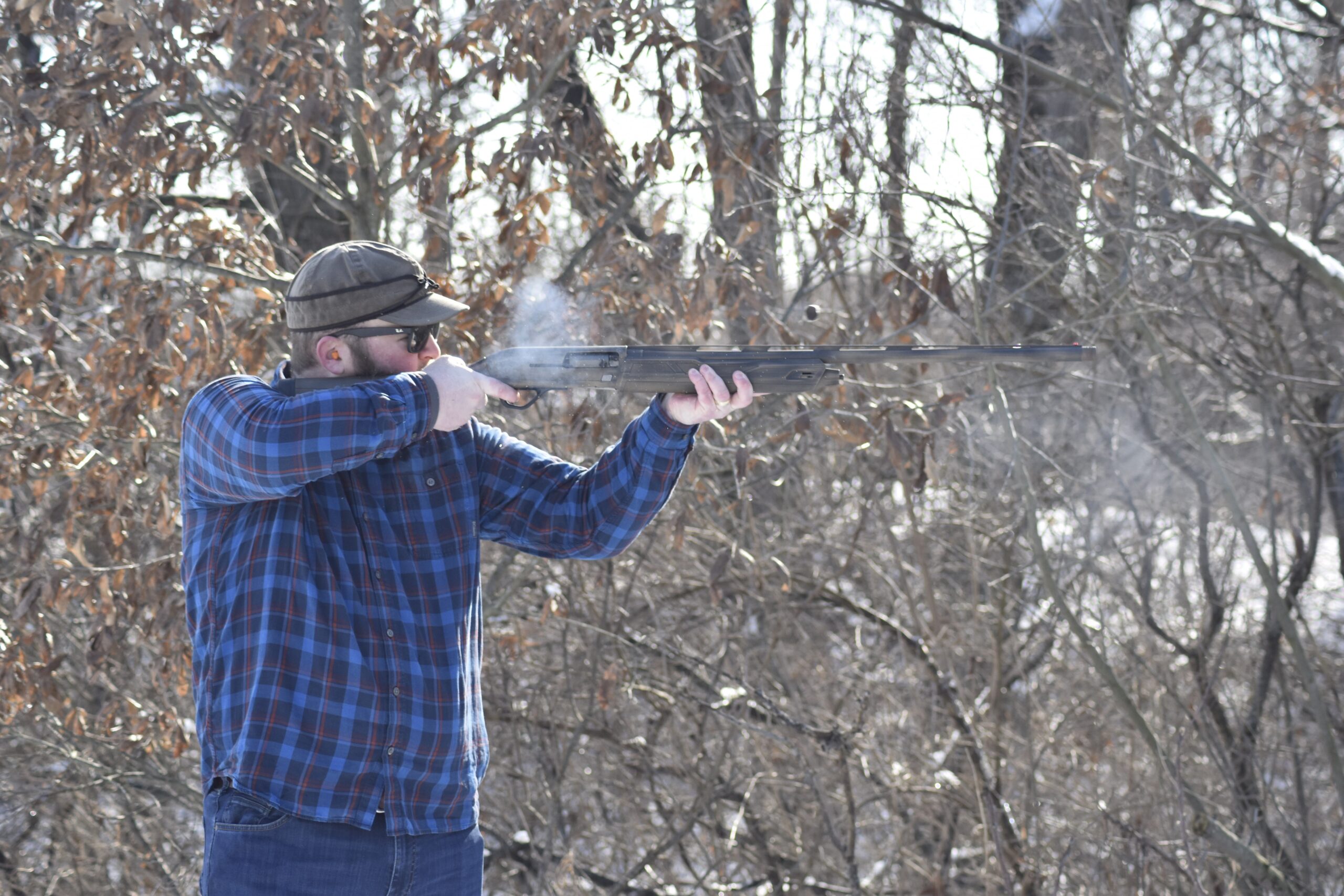
Duck hunters require the most out of their shotguns. We hunt in the toughest and in the soggiest, swampiest places. I’ve seen what a season of hard hunting can do to a brand-new gun, so I wanted an autoloader that I wouldn’t have to worry about functioning properly no matter how harsh the environment. I also wanted a gun I wouldn’t have to strip down for a deep cleaning every time I took it to hunt divers in salt or brackish water, which you must do if your gun is coated in blued steel. The shotgun would also have to shoot better than any I had ever shouldered. This was asking a lot, I know.
You can’t get this kind of functionality and durability from a gun you buy off the shelf, so I asked gunsmith Rob Roberts if he would make the necessary upgrades to a Winchester SX4 and build me a custom duck gun. Here is a detailed look at the upgrades Roberts made.
Why I Chose the SX4
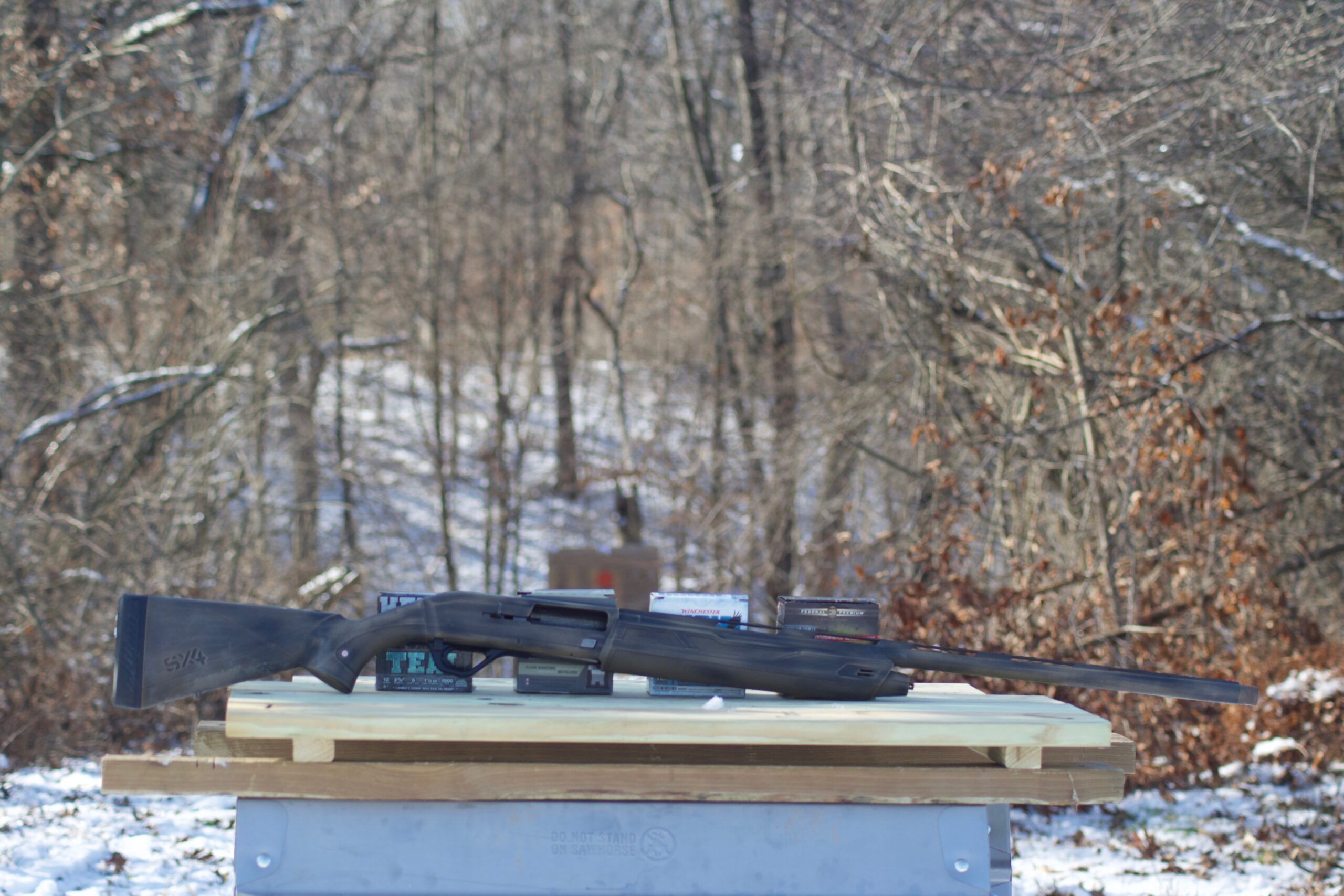
The No. 1 thing I wasn’t willing to budge on for this project was a gas-operated auto-loader. I love Benellis and all the shotguns that fall under that brand, but inertia-driven guns don’t have the versatility I required in an ultimate duck gun. I haven’t had good luck with them cycling light target loads, and since I shoot a lot of skeet in the off-season to stay sharp, there was no way I was buying a gun that functioned off recoil.
I have also found that gas guns cycle better (as long as you keep them clean) on high-volume snow goose hunts. In the past, I’ve hunted snows extensively with the SX3, and the gas system on the SX4 is similar (if not exactly the same). The Super Xs function flawlessly. By comparison, when you are shooting multiple shells through an inertia gun in one volley, they can hang up in the action if the buttstock slips off your shoulder. The inertia guns need you as a backstop to drive the action, and if there is nothing for it to work against, they won’t fire properly. These experiences are based on my personal use and preferences. It’s not an indictment against inertia guns or those companies that manufacture them.
The gun also had to be affordable, which took the Italian manufacturers off the table. Beretta makes great gas guns, but they are pricey in comparison to Winchester. The SX4 has an MSRP of around $930 but you can find them for $750-$800 when there’s not a gun shortage going on. You can’t beat a new 3½-inch gas-operated autoloader for that price.
Also, expensive shotguns don’t necessarily shoot better than more affordable ones (or last longer). Price does not dictate the accuracy of a shotgun, fit does. Fit is the most important factor when it comes to center-punching ducks and geese (hell, any birds), and Winchester has always been a brand that I have shot well. Coupled with a reasonable price tag, it was a no-brainer.
Customizing a Shotgun
On the surface, it may seem like there’s not that much that goes into making a shotgun more durable or shoot a little better. A new trigger, lengthening the forcing cones, adding a choke tube, and a Cerakote finish, and you’re done. But it’s actually not that simple. Roberts has dedicated his life to making long guns supremely accurate. He was able to turn around my SX4 in less than two weeks because he and his staff have so many years of gunsmithing experience. They have also spent countless hours pattering shotguns on paper. As new guns and ammunition are released, they determine which combinations of guns and shotshells pair best. And, if a customer has a particular load they like to shoot, Roberts can tweak the gun to that shotshell.
“We do a lot of pattern analysis to find out what shoots best through your shotgun,” Roberts said. “We will cater to where you hunt, the species you hunt most, and how long your shots typically are. We know how steel, bismuth, and tungsten shoots through different guns and can customize a client’s shotgun to that ammo.”
Smooth Ride
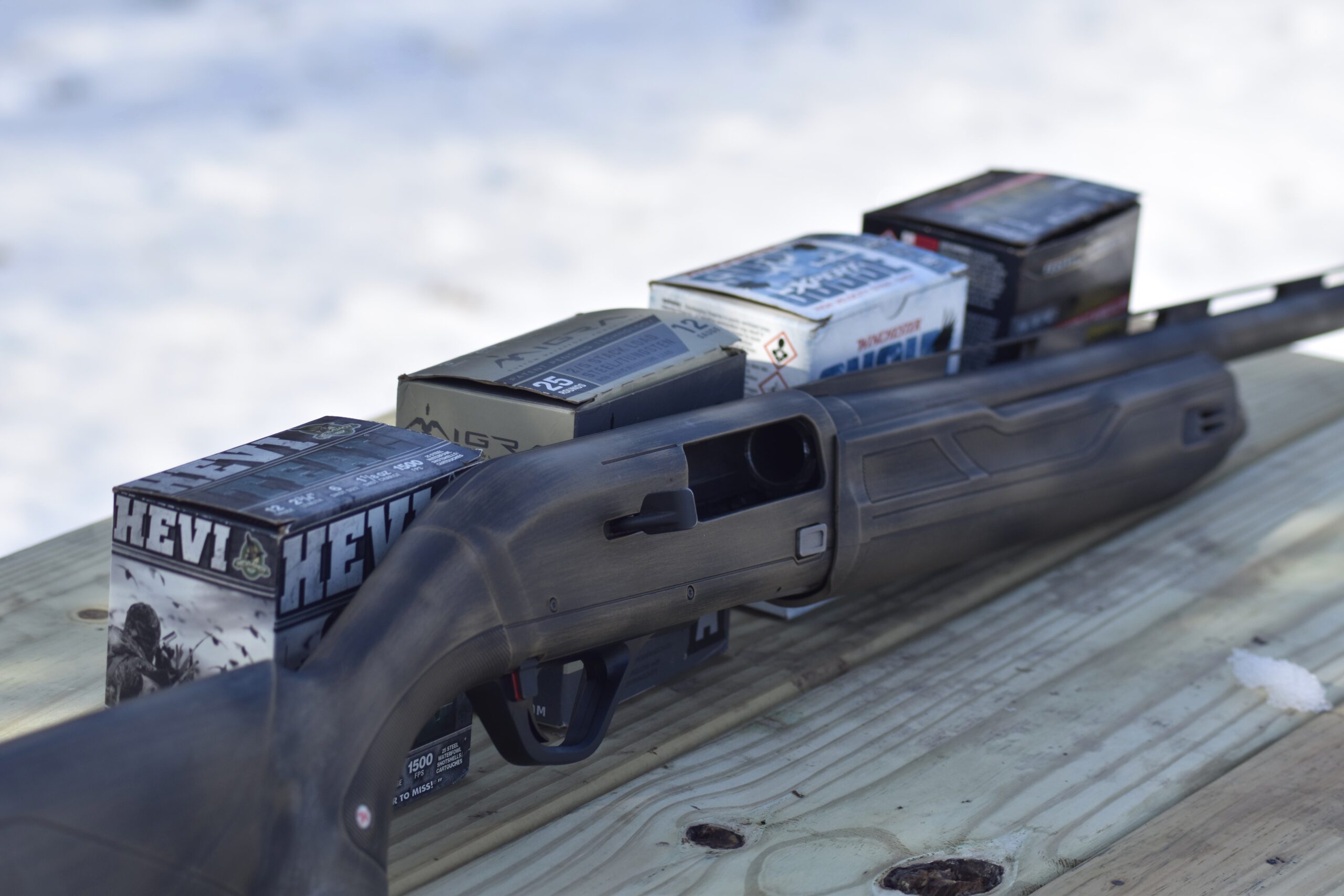
The most intricate process to making a shotgun more accurate is cutting and smoothing the forcing cone. If you look down the barrel of your shotgun you will see a ring in the bore (not all of them have this). That’s the forcing cone, which helps shape the shot exiting the muzzle. It’s more important for European shooters, who are still using paper and cardboard shot cups. Here in the U.S., we have plastic wads, so the shot doesn’t need that taper to keep it in formation. Roberts essentially eliminates that transition area and gives the pellets a smoother ride down the barrel until it hits the choke tube.
“We call it lengthening the forcing cone,” Roberts said. “It helps create a better pattern as the shot opens up. You also gain a little more velocity, but it won’t affect your lead any. We are basically taking any distortion out of the equation and letting the choke tube take over.”
Triple Threat Choke
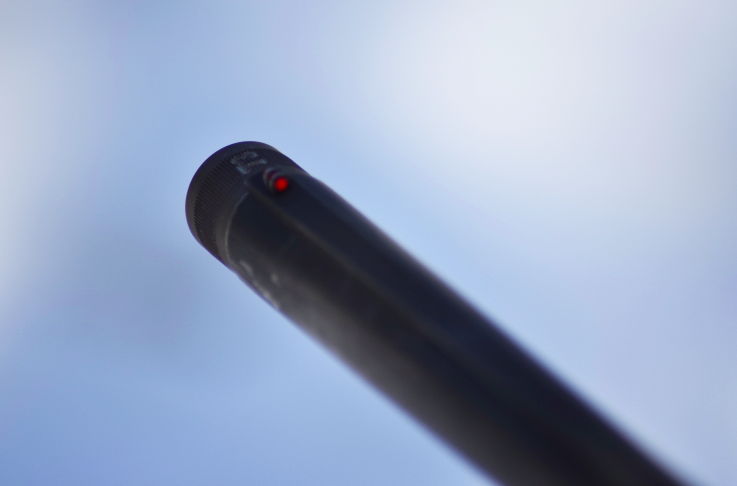
Maybe more than his custom gun jobs, Roberts is known for the Triple Threat chokes. Adding one to the muzzle of your gun—no matter what you shoot—can make you an infinitely better shot. Several years ago, I bought a T2 choke for a Beretta A390 and saw my accuracy sky rocket. I had less wiggle room on shots inside 25 yards, but I also started regularly killing ducks at 40 and even 50 yards.
“I want a 40-yard gun; a solid kill pattern at 40 yards,” Roberts said. “I better be on that duck at 20 yards, but I can also kill him at 60 if I need to. We’re in the overkill business. We want to kill ducks and geese clean.”
A lot of research and development has gone into the Triple Threat choke system. Roberts has customized the parallel sections inside the T1, T2, and T3 (plus a turkey choke). The result is more pellets on target, which spells trouble for any bird you put a bead on.
“You know how when you tip an hourglass over the sand goes through that little bottleneck and then spreads everywhere?” Roberts asked. “Well, we aren’t making your choke tighter, we are making it longer so that it will hold the shot tighter at distance.”
A Lighter Trigger Pull
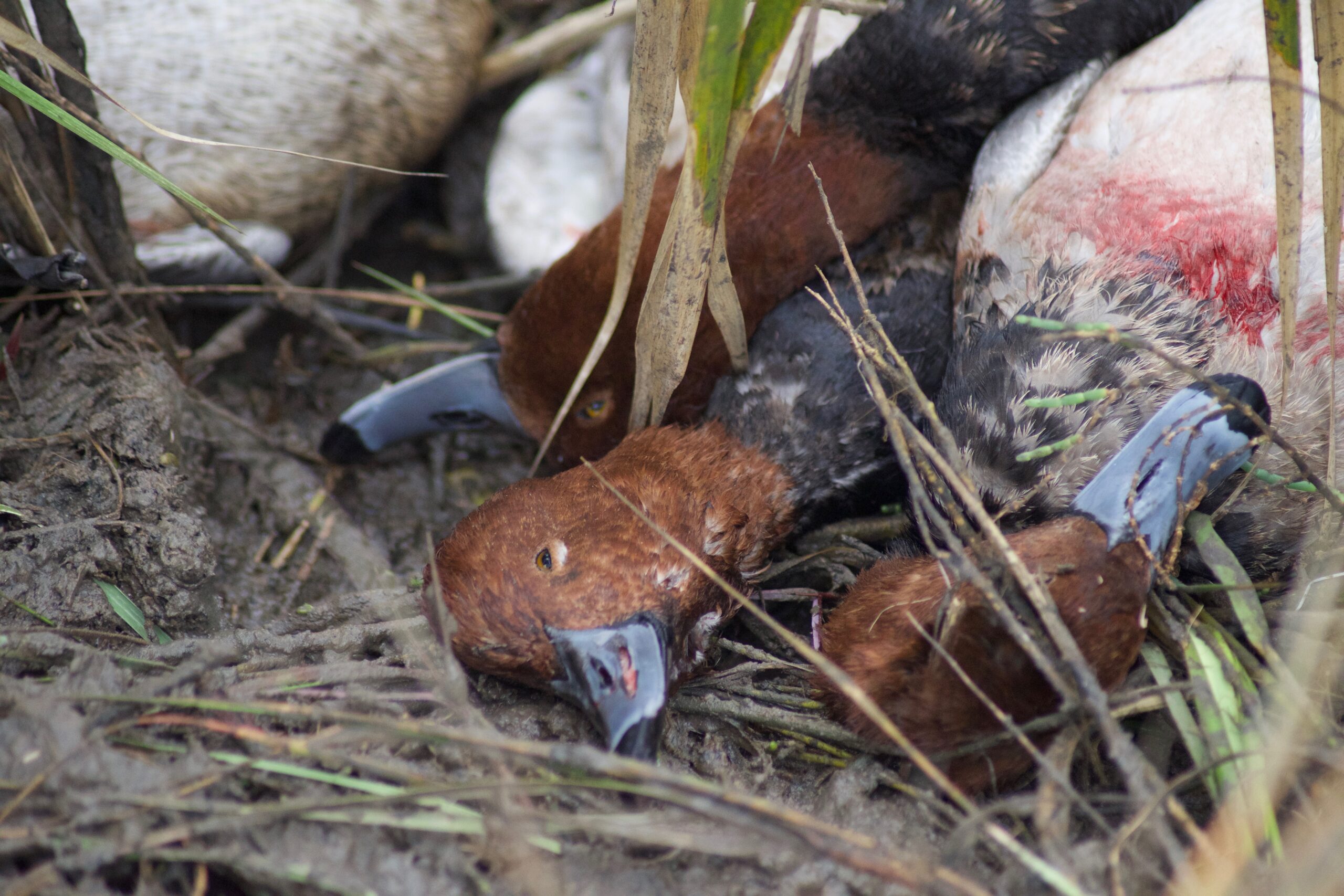
The factory trigger on an SX4 breaks at around 7 pounds, which is fine for a shotgun…or so I thought. Roberts told me before I got the gun back they were customizing the trigger group, but I didn’t give it much thought. I mean what difference would it make on a waterfowl shotgun to lighten the pull weight? Well, it makes a huge difference.
Roberts cut the pull weight down to 3.5 pounds. You can only go that light on gas guns; the inertia semiautos will double fire if you try to go that low. I didn’t pattern or even shoot the gun before I hunted with it, and the first time I pulled up on a greenhead with the SX4, the gun fired before I was on the bird. It was because I was used to the creep of most shotgun triggers. The trigger on my favorite Beretta is like a Cadillac compared to Robert’s custom job, which is more like a Ferrari. It took some getting used to, but it’s made me a faster shot. I get on birds more quickly, which is important if I want to get any shots off hunting with all the 20-somethings I do now.
“I had a customer tell me that it scared the crap out of him the first time he shot his gun,” Roberts said. “It’s as light a trigger pull as you’re going to get on a shotgun. You should take it to the range first, so you can get familiar with it.”
Read Next: Waterfowl Guns: 13 Great Duck and Goose Hunting Shotguns
Cerakote Finish
To ensure my SX4 would never rust or corrode, Roberts applied a Cerkote finish to the entire gun. He does it by hand, so no two guns look the same. There are an endless amount of color options to choose from. I went with a distressed look because I’m not big on camo, but to each their own. Cerakote is a great option for duck hunters because it’s nearly bomb-proof. The stuff just doesn’t chip off, and it protects the exterior of your gun from the elements, giving it a longer shelf life. He will spray the entire gun in one solid color for $350.
On the Range
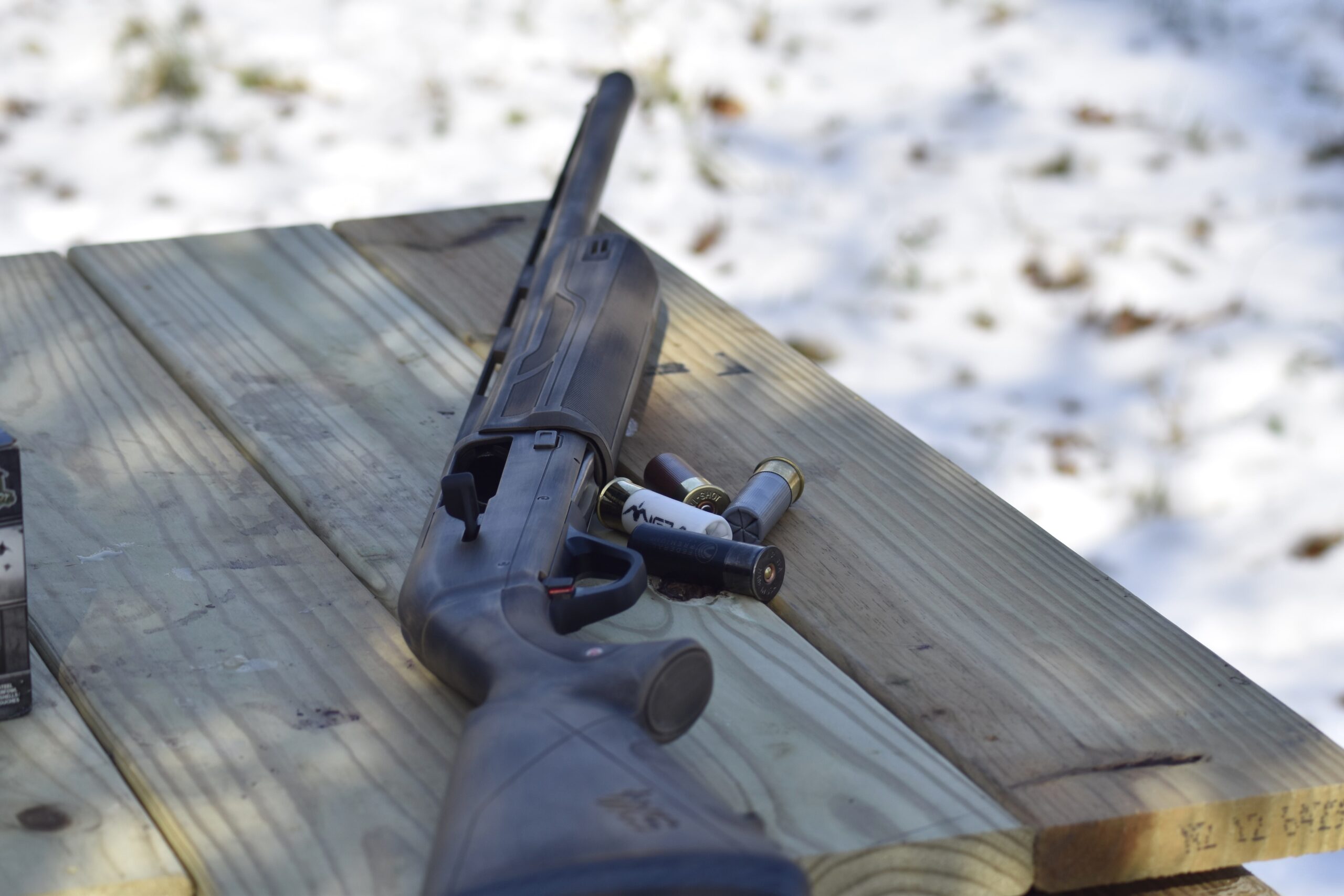
Most duck hunters pattern their shotguns from a bench on a 30-inch paper target. Well, that will give you an idea of how your gun patterns in optimal conditions, but as any waterfowler knows, that’s not how we shoot ducks. So, I shot standing up and brought the gun to my shoulder each time, just as I would hunting from a blind, and gave each shell an honest shot (if I pulled left/right or shot low/high, I re-shot). I also thought 30 inches was a little large, so I shrunk the kill circle down to 25 inches, which is more realistic because only the biggest Canada geese are capable of filling up that size of target area.
I test-fired the SX4 from 20, 30, 40, and 50 yards with two of Roberts’ chokes (the T2 and T3), and four different kinds of shotshells to see how the gun patterned each load. The SX4 has a wider bore diameter (.742) than Italian-made guns, which typically range from .720 to .723. Since the Winchester has a larger bore it patterns better with the tighter T3 choke, according to Roberts. Benellis and Berettas like the T2 because their bore diameter is smaller. You will see that in a few cases the T2 had more target hits on 20- and 30-yard shots, but they were much more spread out across the paper. Overall, the T3 delivered shot more evenly than the T2. Here are the results from the SX4.
Hevi-Teal 2¾-inch No. 6s (1 1/8-ounce shot charge, 1,500 fps) – 373 pellets
- 20 yards: T2: 336 / T3: 319
- 30 yards: T2: 291 / T3: 277
- 40 yards: T2: 90 / T3: 171
- 50 yards: T2: 87 / T3: 103
Migra 3-inch No. 2/5s (1¼-ounce shot charge; 1,450 fps) – 170 pellets
- 20 yards: T2: 159/ T3: 161
- 30 yards: T2: 135 / T3: 129
- 40 yards: T2: 52 / T3: 111
- 50 yards: T2: 37 / T3: 50
Black Cloud 3-inch No. 3s (1¼-ounce shot charge, 1,450 fps) – 166 pellets
- 20 yards: T2: 162 / T3: 156
- 30 yards: T2: 109 / T3: 139
- 40 yards: T2: 68 / T3: 92
- 50 yards: T2: 21 / T3: 26
Winchester Xpert Snow Goose 3-inch, BBs (1¼-ounce shot charge, 1,475 fps) – 90 pellets
- 20 yards: T2: 90 / T3: 86
- 30 yards: T2: 74 / T3: 70
- 40 yards: T2: 43 / T3: 65
- 50 yards: T2: 38 / T3: 46
The Field Test
I took the SX4 to the coastal prairie and saltwater bays of Texas to see how the gun stacked up against a variety of puddle ducks and divers in several different environments. It performed flawlessly, and I purposely hadn’t cleaned the gun in more than a season (I hunted with it a year before sending it to Roberts). But Texas is also a warm climate compared to most places, and cold can bog down a dirty gun fast, so be sure to keep it clean it more often than I did.
I shot teal, gadwall, and shovelers the first two days alongside buddy John Gordon of Ducks Unlimited, who was also using an SX4 (with a T3 choke) during our trip. Most of the shots were at 25 to 40 yards, but a few were farther, typical for wary south-Texas ducks after the second split. We also shot decoying redheads on Matagorda Bay, though I did go long (40-plus yards) and knocked down a drake early because I was too impatient to let him work in tight. It was a good test for the gun. Snap shots on teal, shovelers bombing the spread, plus long (50 to 60 yards), straight up shots on a few non-committed pintails and gray ducks.
I always judge my shooting afield against the best in our party, and if I can keep pace with that person, it’s a good day. Gordon is a former guide and better shot than me, but I felt like I held my own. I’ve hunted with him a few other times with other guns in my hand, and the gap in accuracy between the two of us has been much wider. Without question, I am a better shot with Roberts’ aftermarket upgrades. I do wish that I was able to pattern the gun before heading to Texas where I was shooting the T2 instead of the T3. You can clearly see from the pattern test data that I would have been far more deadly with the T3…at least that’s what I keep telling Gordon.

